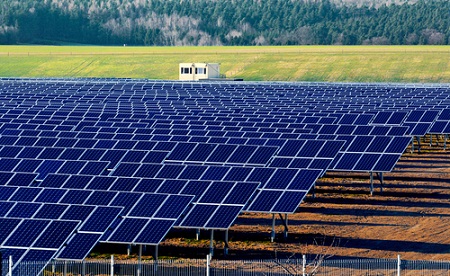Most people understand that once solar panels are paid off, the energy they provide is free.
But what about on a national level? Many haven’t really internalized the corresponding fact. The same people worry that government investment in solar, or policies that encourage it, is somehow wasting money. But solar works the same way at the national level. Once the infrastructure is paid for, the energy is free. The same with wind. It is money well spent.
A new coal plant must be paid for, too, but after that initial cost is paid, money must continue to be pumped in, day in, day out, shoveling a fresh train-car-load of coal into a furnace every 12 hours, for the next 30 years.

Some nations have invested in so much renewable power in the last few years, that their citizens will share a future golden age of free energy, starting as soon as 2020. And that investment will yield increasing dividends in the decades after that, as yet more wind and solar, now in the pipeline, gets connected.
Australia, a nation of only 20 million, has installed half a million solar arrays on homes. Germany has installed 17 gigawatts (GW) of solar power on homes in the past five years. Portugal went from 2 percent solar to 15 percent by the end of 2009. Morocco is actively implementing plans to get 42 percent of its power from solar. Citizens in all of these nations will be getting power that has no further cost, in just eight more years.
Only 1.3 GW of solar had ever been connected worldwide in 2001, but it took only eight years for that to zoom to 40 GW globally. Now there is yet another 24 GW in the pipeline, counting just five states in the U.S. alone.
And there is about four times as much installed wind power as solar. Europe will meet 16 percent of its needs with wind by 2020, and now has a staggering 141 GW of offshore wind in the pipeline.
China, able to make and implement similar long range plans, is similarly ambitious. In 2010, with a fifth of the world’s population, China accounted for more than a third of all renewable energy investment globally.
The strategic implications of this coming power imbalance between these states and nations and the ones that must still pay fuel costs dwarf any current financial instabilities.
We see the beginning of this now. Renewable energy is already lowering electricity costs in some regions—through the Merit Order Effect, a rule that requires that the lowest fuel-cost energy be used first on the grid.
This golden age of energy prosperity will make a sharper contrast between these nations and states and those that will face higher fossil energy costs. States in the U.S. south that have no renewable energy requirements, like Kentucky, which is over 90 percent coal powered, or countries like Malta, with zero percent renewable energy—and both resisting making the switch—will be in serious energy poverty in the early half of the 21st century.
Of course, maintenance is needed on all power plants, wind, solar or coal. But maintenance is a small part of the cost of energy. It is the ongoing fuel cost that adds up.
Unlike any coal plant built now, these renewables will one day produce energy for free, ushering in a golden age, beginning around 2020, and burgeoning for decades after that.
So much of the current battle about renewable energy misses this key point. It is about real future prosperity.